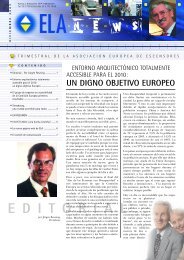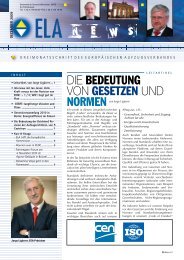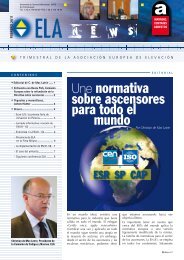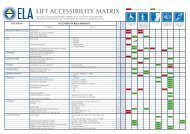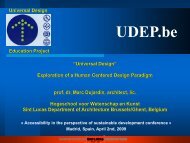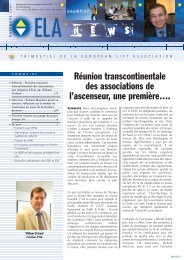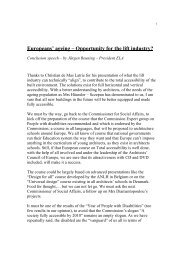WP6-Brochure-E4 brochure - ELA European Lift Association.
WP6-Brochure-E4 brochure - ELA European Lift Association.
WP6-Brochure-E4 brochure - ELA European Lift Association.
Create successful ePaper yourself
Turn your PDF publications into a flip-book with our unique Google optimized e-Paper software.
High efficiency motors are typically constructed with superior magnetic materials, larger<br />
magnetic circuits with thinner laminations, larger copper/aluminium cross‐section in the stator<br />
and rotor windings, tighter tolerances, better quality control and optimised design. These<br />
motors, therefore, have lower losses and improved efficiency. Because of lower losses, the<br />
operating temperature can be lower, leading to improved reliability [1].<br />
Some of the options to increase induction motors efficiency are presented in Figure 3‐1.<br />
Figure 3‐1. Options to increase the efficiency of induction motors [2]<br />
Stator losses can be reduced by increasing the cross‐section of stator windings which lowers<br />
their electrical resistance reducing I²R losses. This modification is where the largest gains in<br />
efficiency are achieved. High efficiency motors typically contain about 20% more copper than<br />
standard efficiency models of equivalent size and rating.<br />
Increasing the cross‐section of the rotor conductors (conductor bars and end‐plates) and/or<br />
increasing their conductivity (e.g. using copper instead of aluminium), and to a lesser extent by<br />
increasing the total flux across the air gap between rotor and stator reduces the rotor losses.<br />
Magnetic core losses occur in the steel laminations of the stator and rotor and are mainly due<br />
to hysteresis effects and to induced eddy currents. Both types of losses approximately increase<br />
with the square of the magnetic flux density. Lengthening the lamination stack, which reduces<br />
the flux density within the stack, therefore reduces core losses. These losses can be further<br />
reduced through the use of magnetic steel with better magnetic properties (e.g. higher<br />
permeability and higher resistivity) in the laminations. Another means to reduce the eddy<br />
currents magnetic core losses is to reduce the laminations’ thickness. Eddy current losses can<br />
also be reduced by ensuring an adequate insulation between laminations, thus minimising the<br />
flow of current (and I²R losses) through the stack.<br />
17





